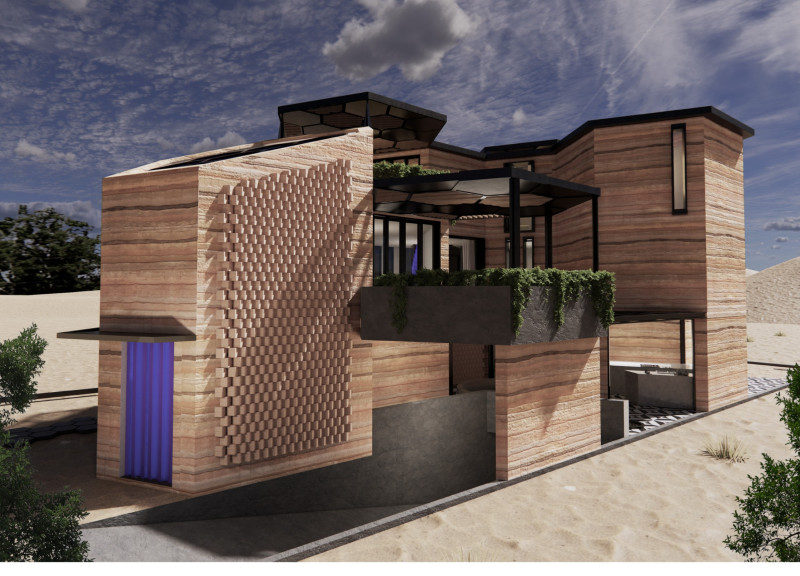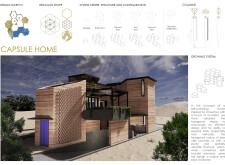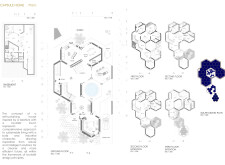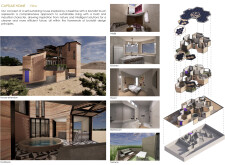5 key facts about this project
### Overview
Located in a contemporary residential setting, the Capsule Home merges sustainable living practices with a brutalist architectural aesthetic, influenced by the structure of a beehive. The design's intent is to create a self-sustaining environment characterized by hexagonal spatial arrangements that promote efficient living while allowing for potential expansion in both horizontal and vertical directions. This project reflects contemporary architectural trends that prioritize environmental harmony and robust industrial elements.
### Spatial Configuration
The architectural layout consists of hexagonal modules that delineate various functional areas, such as living rooms, kitchens, and outdoor spaces. This geometric approach not only optimizes space but also facilitates an organic transition between distinct sections of the house. The design accommodates a basement and ground floor, along with modular extensions that offer flexibility for future adaptations. Large windows are integrated throughout the facade, enhancing natural light penetration and fostering a connection to the surrounding landscape. This strategic fenestration contributes to energy efficiency and promotes interactive living with the outdoor environment.
### Material Selection and Sustainability
The Capsule Home employs a diverse range of materials that support its structural integrity and aesthetic vision. Reinforced concrete forms the basis of the design, aligning with the brutalist narrative while ensuring durability. Locally sourced timber is utilized for both structural and finishing elements, introducing warmth to the interiors. Large glass windows provide natural illumination and visual continuity with external spaces, while structural steel offers strength without compromising minimalism. Natural stone is used in countertops and flooring, combining elegance with practicality. The project incorporates solar panels into the design, reinforcing its commitment to renewable energy and responsible resource utilization. The thoughtful integration of local materials not only enhances the building's ecological footprint but also supports the local economy, exemplifying a sustainable architectural approach.






















































